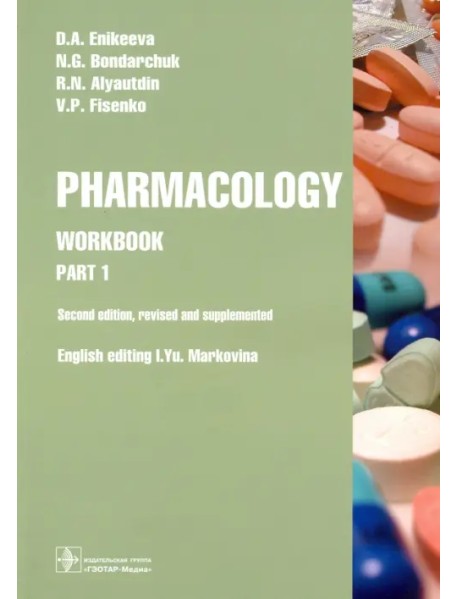Pharmacology. Part 1. Workbook

-
51.19 €
-+
This workbook has been specifi cally designed for foreign students of Russian medical schools who study pharmacology. It is supposed to be used as an aid for better preparation for pharmacology practical classes.
The content of the workbook corresponds to the pharmacology course program approved for the third year students by the Ministry of Health of the Russian Federation. Part 1 of the Workbook consists of 16 units, of which 3 units are grouped under the heading of General pharmacology, and the remaining 12 units are included in the Particular pharmacology division. The units begin with topics to be discussed to familiarize students with particular questions they will be asked at the lesson. Students will fi nd it helpful to review background information (brief description of basic pharmacological processes and characteristics of particular drug groups) and key terms provided in each unit. The units dealing with Particular pharmacology include classifi cations of drugs. As the name workbook implies it contains a variety of tasks for self-training, the tasks being presented in the form of multiple choice questions, tables, pictures, and diagrams as well as clinical cases.
In general, the book aims at better comprehension of major pharmacological topics including understanding of mechanisms of drug action, which determine both their main therapeutic and side eff ects. Students will also fi nd answer keys to check their progress.
The 2-nd edition is designed to provide advanced and modern information in regard to the subject matters covered, with the understanding that knowledge and medical practice constantly evolve. The main textbooks: D.A.Kharkevitch “Pharmacology”, 2-nd edition, Moscow; B.G.Katzung “Basic and Clinical Pharmacology”, 14-th edition, NY.
The authors hope this kind of training may be of interest not only for foreigners but also for other medicine and pharmacy students.
The content of the workbook corresponds to the pharmacology course program approved for the third year students by the Ministry of Health of the Russian Federation. Part 1 of the Workbook consists of 16 units, of which 3 units are grouped under the heading of General pharmacology, and the remaining 12 units are included in the Particular pharmacology division. The units begin with topics to be discussed to familiarize students with particular questions they will be asked at the lesson. Students will fi nd it helpful to review background information (brief description of basic pharmacological processes and characteristics of particular drug groups) and key terms provided in each unit. The units dealing with Particular pharmacology include classifi cations of drugs. As the name workbook implies it contains a variety of tasks for self-training, the tasks being presented in the form of multiple choice questions, tables, pictures, and diagrams as well as clinical cases.
In general, the book aims at better comprehension of major pharmacological topics including understanding of mechanisms of drug action, which determine both their main therapeutic and side eff ects. Students will also fi nd answer keys to check their progress.
The 2-nd edition is designed to provide advanced and modern information in regard to the subject matters covered, with the understanding that knowledge and medical practice constantly evolve. The main textbooks: D.A.Kharkevitch “Pharmacology”, 2-nd edition, Moscow; B.G.Katzung “Basic and Clinical Pharmacology”, 14-th edition, NY.
The authors hope this kind of training may be of interest not only for foreigners but also for other medicine and pharmacy students.
